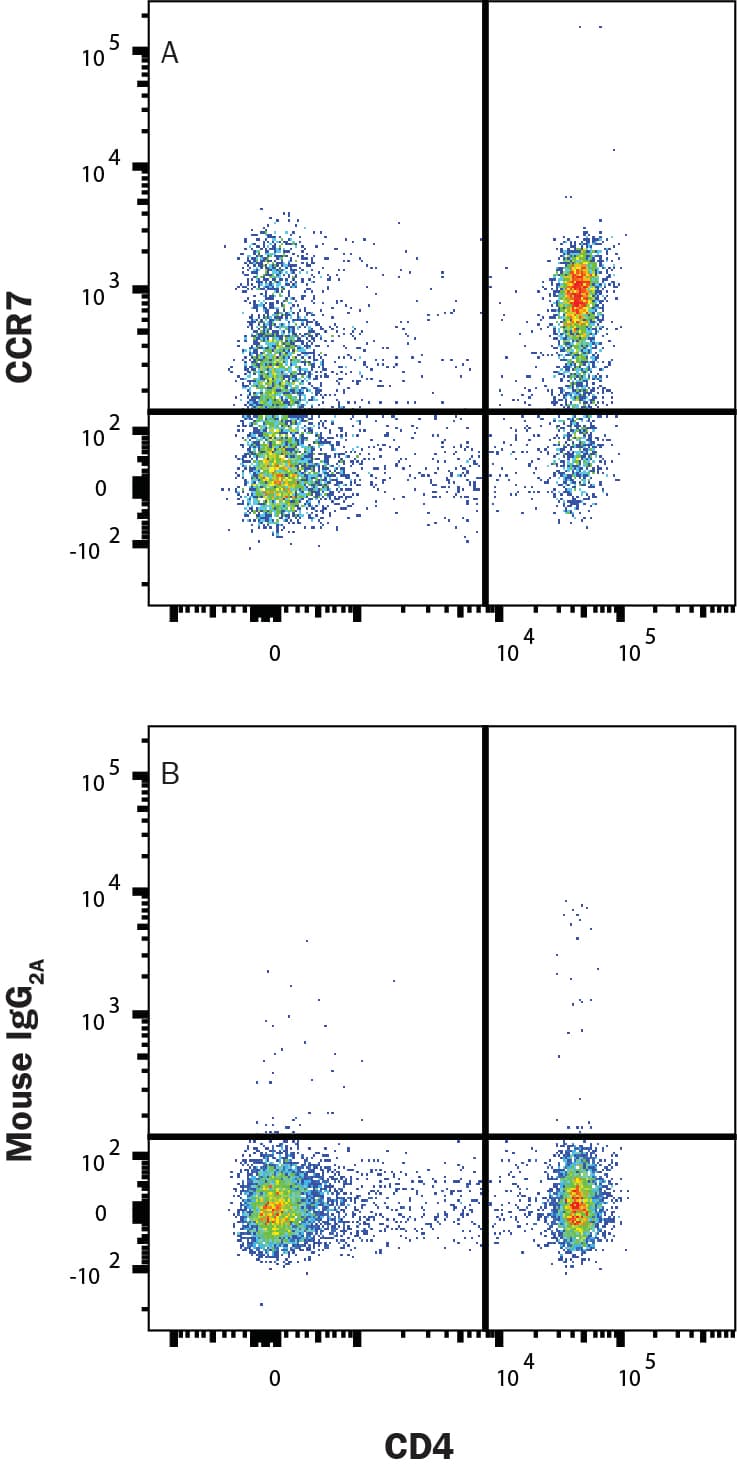 全部商品分类
全部商品分类





Scientific Data
 View Larger
View LargerDetection of CCR7 in Human Lymphocytes by Flow Cytometry with anti-Mouse Secondary Antibody. Human peripheral blood lymphocytes were stained with (A) Mouse Anti-Human CCR7 FAB2 Recombinant Monoclonal Antibody (Catalog # MAB197R-FAB2) or (B) Mouse IgG2A isotype control antibody (MAB003), followed by APC-conjugated Anti-Mouse IgG Secondary Antibody (F0101B) and Mouse anti-Human CD4 PE-conjugated Monoclonal Antibody (FAB3791P). Staining was performed using our Staining Membrane-Associated Proteins protocol.
 View Larger
View LargerDetection of CCR7 in Human Lymphocytes by Flow Cytometry with anti-His antibody. Human peripheral blood lymphocytes were stained with (A) Mouse Anti-Human CCR7 FAB2 Recombinant Monoclonal Antibody (Catalog # MAB197R-FAB2) or (B) Mouse IgG2A isotype control antibody (MAB003), followed by PE-conjugated Anti-His Antibody (IC050P) and Mouse anti-Human CD4 APC-conjugated Monoclonal Antibody (FAB3791A). Staining was performed using our Staining Membrane-Associated Proteins protocol.
Human CCR7 Antibody Summary
Met1-Pro378
Accession # AAA58615
Applications
Please Note: Optimal dilutions should be determined by each laboratory for each application. General Protocols are available in the Technical Information section on our website.

Background: CCR7
CCR7 (Chemokine Receptor 7; also CD197) is a 7 transmembrane (7TM) G protein-coupled chemokine receptor for the homeostatic chemokines CCL19/MIP-3 beta and CCL21/6Ckine. CCL19 and CCL21 are constitutively expressed by high endothelial venule epithelial cells or fibroblastic reticular cells in secondary lymphoid organs. CCR7 is upregulated on dendritic cells, naïve and memory T cells, Treg, NK cells, and B cells following inflammatory stimulation. Its expression enables the function of immune cell trafficking to and retention in regional lymph nodes for expansion of the adaptive immune response. Human CCR7 shares 87% amino acid sequence identity with mouse CCR7.

Preparation and Storage
- 12 months from date of receipt, -20 to -70 °C as supplied.
- 1 month, 2 to 8 °C under sterile conditions after reconstitution.
- 6 months, -20 to -70 °C under sterile conditions after reconstitution.






 用小程序,查商品更便捷
用小程序,查商品更便捷




